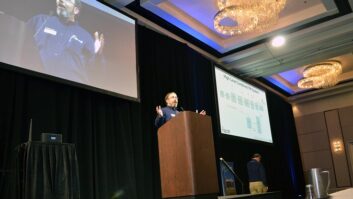Kintronic Labs President Tom King recently met with several FCC staffers about their suggestions to help revitalize the AM band.
He tells Radio World he and Dr. Steve Smith, consultant to Kintronic Labs, presented three critical steps to restoring AM: (1) enforcement of Part-15 RF emission limits for power lines and other devices, like LED traffic lights and most types of home CE devices, noting the worsening electromagnetic environment for AM; (2) minimum AM receiver standards to provide parity with their FM counterparts; and (3) synchronization of AM stations to eliminate beats and improve coverage for all co-channel stations involved and local AM low-power synchronous boosters to provide close-in coverage in pattern nulls, for instance.
They also urged the commission representatives to consider random testing of items such as LCD plasma television receivers, LED lights and other devices to determine if they’re truly compliant with the applicable Part-15 rules before they are introduced into the marketplace.
The Kintronic president had earlier written an open letter to the AM radio industry, urging broadcasters to tell the commission they support these three concepts.
Some of the agency officials King and Smith met with in a series of separate meetings on Sept. 23 included OET Chief Julius Knapp, Commissioner Ajit Pai and his staff, Media Bureau Audio Division Chief Peter Doyle and several members of his staff, Enforcement Bureau representatives and Larry Olson, assistant chief of the International Bureau. Staffers of other commissioners attended some of these meetings as well.
King and his staff also provided audio demonstrations of two wideband (10 kHz) CQUAM AM stereo receivers, as directly compared with a high-quality FM HD Radio tuner and a typical standard bandwidth (~2.5-kHz) AM receiver. King emphasized that the AM stereo audio quality of the older-generation and current generation wideband receivers was very similar to that of the FM HD tuner, as opposed to the much worse typical narrowband AM unit, which is representative of most AM receivers sold today for both portable, vehicle or home use.
King says he detected “interest” in what he’s proposing and was invited to come back to the agency for another visit with one of the commissioners that was out of town at the time. “There’s no question that what we’re proposing is needed. It’s just a question of how to get it done,” King tells Radio World.












